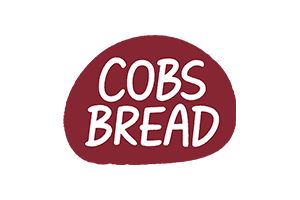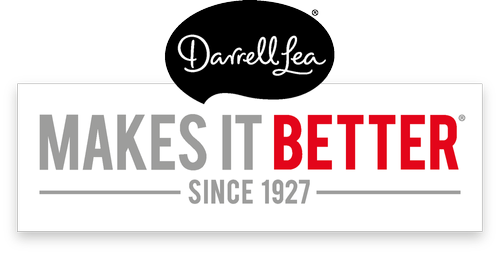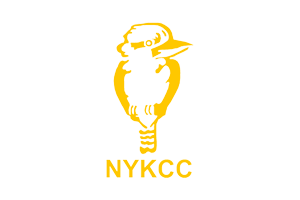Whether you embarked on your US-bound journey in pursuit of a dream career or followed your partner kicking and screaming, you’ve no doubt grappled with some American idiosyncrasies, which only become more pronounced once you incorporate childrearing.
I gave birth to my first “American” four years into living here, but my launch into quintessential American parenting came at her 3-year-old medical check-up. My daughter was on track physically and developmentally, however, towards the end of our visit, the pediatrician asked me what extracurricular activities she was involved in. I was taken aback because I didn’t think this was relevant at a doctor’s visit. “She just started preschool,” I stammered, “and she also attends an art class…” (which was actually just a drop-in class at the mall). The pediatrician waited for me to continue, as though I should have a long list of classes I could proudly say she was enrolled in. We were already sending her to an overpriced Spanish-immersion preschool and on the days I was home with her, I was jam-packing her schedule with a myriad of playdates, walks to the park, kids’ museum and zoo visits, and “café etiquette” lessons. But since none of these activities had a quantifiable skill acquisition – I gathered by the look on the pediatrician’s face – they weren’t enough.
The cultural pressure to excel and do “all the things” is ever-present in the US; it may even be what drew you here in the first place. With this constant push, of course, comes a lot of exciting opportunities, which I’ve found can be positive for our children. During my nine years of being an Aussie mom to American girls, I’ve discovered that the best way to approach this aspect of the culture is to incorporate what will serve your family and your personal goals, and try to filter out the rest. I’ve also observed a few more tips for a smoother transition into raising kids in the US. Here are my top five:
1. Research Employment Benefits Before Starting a Family
Obviously “surprises” happen and you don’t always have the luxury of planning well in advance but if you’re thinking of starting a family in the next few years, figure out ahead of time what medical and family leave benefits your job offers.
My first job in NYC was as an hourly/casually employed writer and it didn’t include benefits. When I was offered a permanent part-time position at the same company, it included health insurance, but according to the contract, I was still shy of the required hours to be eligible for three months paid maternity leave (back then, New York only covered you for six weeks). I asked my boss if there was a way we could work the three months maternity leave into the contract, so she took the query to the CEO who amended the contract to accommodate my request. Something simple like that can really improve your peace of mind before starting a family.
While the Family Medical Leave Act (FMLA) ensures your job is protected for 12 weeks at eligible places of employment throughout the US – should you choose to take that time to bond with your child – not all states offer Paid Family Leave (PFL). Since each state and employer has different policies, it’s important to know all your rights and eligibility before jumping on the parenting train.
I also found out that childbirth under my medical benefits was covered at 100% which was more than what my husband’s health plan offered, so we used mine when determining which OBGYNs and other service providers to work with.
2. Establish a Childcare Plan
Finding safe and reliable childcare can also be daunting when you’re far away from family and not getting six to 12 months leave to bond with the baby. If you’re not going to be the primary caregiver, figure out in advance what the plan is going to be; if it’s a formal childcare center, start touring while expecting. The waitlists can be long and you want to make sure that you feel 100% comfortable with who’s going to take care of your little one.
If you’re not sure where to start, use a childcare aggregate site like winnie.com where you can peruse a wide variety of options, from infant care to private kindergarten programs. And when setting up tours of childcare facilities, keep an open mind. You may have your heart set on the cute Montessori close to your work, but find that a bigger, more established center like Bright Horizons has better hours and allows you more flexibility. Aim to apply to at least three facilities so ensure getting a spot.
For in-home/private care, check out care.com or urbansitter.com where you can customize your search and place an ad for the kind of caregiver and hours you need. You can also put out feelers with friends, coworkers, and local social networking sites. If a private nanny or traditional childcare center is out of the budget, consider more affordable options like a mother’s helper (this works well if you have a WFH arrangement), nanny shares or an at-home/family daycare.
And again, look into your employer benefits for any childcare perks. You may be eligible for a waived application fee, priority on the waitlist and discounted tuition at an onsite daycare, and even subsidized back-up care for when your Plan A falls through. Some employment packages also include a Dependent Care Flexible Spending Account (FSA), which allows you to put pre tax funds away to cover a portion of your childcare expenses.
3. Treat Halloween as the Most Important “Holiday” of the Year
You may have heard that Thanksgiving is a huge deal in the US and some families regard it as a more important holiday than Christmas. While this is partly true, there should be a caveat. If you have young kids, the most important day of the year is definitely Halloween.
Unfortunately, you’ll have to ask for a vacation day to be available for the day-long extravaganza as it’s not yet considered an actual “holiday”. Much like Christmas and Thanksgiving, the preparation begins several weeks in advance. First there’s the time listening to your kids flip-flop between who they want to dress up as and being patient until they arrive at their final decision. Their choice of Halloween costume is going to define their whole year, so you really need to be on-board listening to the reasoning behind it.
Once the outfit is decided on, be sure to confirm that it’s their final choice and order it promptly, so that it a). doesn’t sell out if it’s a popular one and b). arrives in time and you can avoid high expedited shipping costs. The day itself will be filled with dressing them up in the morning, attending a parade at the school and then preparing for whatever party you might be going to or hosting before trick or treating. The soiree part is actually fun as you can hang out with some adults, and then the trick or treating is cute to watch, especially if your kids are young enough to still be mesmerized by free candy from strangers – which only on this day – is perfectly acceptable.
4. Be Prepared to be Involved in School Life
I was under the misapprehension that once my kids were in primary/elementary school that I’d have all this extra freedom, but depending on the school your child attends, there may be a certain level of volunteer hours required. And beyond that, social events to attend.
There’s also the emails that teachers send on a weekly basis, the daily reminders through an app, WhatsApp conversations with the parents, supervising homework from the age of four, assisting with elaborate craft assignments, driving them to their extra-curricular activities, and helping maintain friendships out of school through playdates and getting to know the parents. And don’t forget the birthday parties! The more kids you have the more your weekends will be filled with birthday parties of kids you’ve never heard of before. And lastly, be sure to mark all the other sacred “holidays” on your calendar like Valentines, St Patrick’s Day, etc. because there will be a class party and you’ll either have to volunteer or send kids in themed clothing, and possibly pack gifts for everyone! On the plus side, this is also a really great way to make friends. And most likely the parents you meet through these activities will also end up being part of your support network.
5. Preserve Upbeat Energy for the Public
If you’re in the playdate zone, you’ll encounter some American parents who like to apply a positive, upbeat spin to everything they say to their kids. Such as, “You are so sweet for giving your sister a lift up onto the swing, but do you think you should have pushed her off it a minute later?” Whereas, I would probably say, “Why did you push your sister off the swing? Don’t do that again!” Sometimes the direct Aussie way can startle other parents, but I find it’s the most effective with my kids. If there is a more positive way to say something or resolve conflict, I’m all for it if it still conveys the intended message, but I don’t have the energy to talk to my kids in a peppy, upbeat voice all of the time. However, as a cultural integration activity, try incorporating some of these upbeat phrases into your vernacular. They will be useful when you’re touring preschools and trying to impress the admissions directors! Even if your kids look confused when you use that tone of voice.
So whether your parenting experience in the US will be short-term or you’re planning to stay indefinitely, you can certainly benefit from tapping into the positive aspects of the culture. Although the overarching competitiveness can at times be overwhelming, it can also motivate your child to excel in a chosen field, while they’re surrounded by an eclectic mix of resources and networking opportunities. And if the pressure to over-schedule ever gets too much, it’s okay to draw the blinds so you can binge-watch Bluey and teach your kids how to do Tim Tam slams!
















I totally agree with all of this as an Aussie mom of a teenage “Aussie-American”
My experience has always been to simply adopt that “I’m a bad mom” when engaging with other American moms in the kid comparing conversations.
6 sports “nope… I’m a bad mom”
3 languages at age 6 “nope, I’m a bad mom”
Did you give every flu shot, multi vitamin and wrap your kids in bubble wrap “nope, I’m a bad mom”
Once I’ve convincingly established that I cannot compete then I’m generally off the hook for all of it and put on the shelf as not threatening.
The more you try to compete the more the bar is constantly raised, a trait I love about America and am fearful of as a mom.
I do my best to bring him up in my Aussie ways and hear on a daily basis that I’m the best mom from him and his friends that visit our house.
Nothing compares with that!